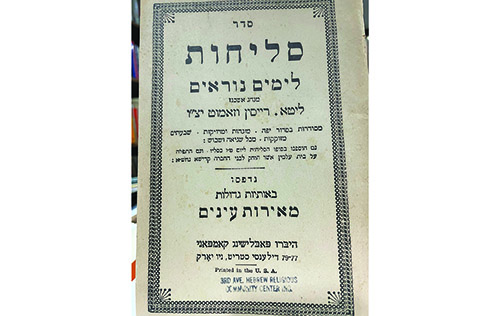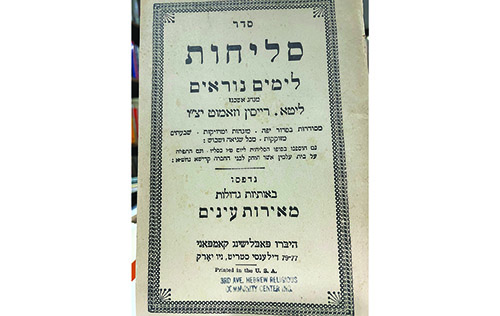
The Yud Gimmel Middot, or the 13 characteristics or qualities of Hashem, are a central feature of the Selichot service. They are also recited on fast days and repeated often on Yom Kippur. (Those who follow Nusach Sefard say it daily in their tachanun.) The Gemara (Rosh Hashanah 17b) informs us in the name of R. Yochanan that whenever the Jewish people sin, the recitation of these attributes will generate forgiveness. R. Yehudah adds that these words are a commitment from Hashem to forgive us, which is why we recite them so often during the Yamim Noraim.
However, sometimes our prayers are not answered. Some commentaries believe that the language of the Gemara יעשו לפני כסדר הזה does not mean recite this prayer, but perform or implement this order of prayer. In other words it is not sufficient merely to read the words, but we must act them out by embodying these attributes of mercy and compassion in our interactions with others. When Moshe asked Hashem to explain His essence, He appeared before Moshe wrapped in a tallit, like a shaliach tzibbur, i.e., having others in mind. As we grapple with our own shortcomings and inadequacies we need to focus on the needs of others.
The entire framework of this dialogue is based on God changing from pure judgment (midat hadin) to mercy (midat harachamim). This can be seen in the change in language from the first to the second set of Tablets. God is stern when he first appears at Sinai—a zealous God, a punisher, unforgiving, quick to anger. After Moshe urges Him to forgive the people for the Golden Calf, the language in the second tablets changes to merciful, forgiving, slow to anger, kind, and slow to punish.
These qualities allow God’s Presence to dwell among His people even though they may not be worthy. Man is human and frail. Sometimes he sins. How then can man have a relationship with God? Because man has the potential to overcome his shortcomings, and that is why God doesn’t immediately punish him when he sins. The covenant of the Second Tablets establishes this relationship and this is why we remind God and ourselves of this promise over and over again during this time of year.
Obviously, as Rambam points out, we cannot describe God because by definition He is indescribable. So we utilize human qualities and terminology to try to refer to God in terms to which we can relate. Basically, we need to improve our behavior and attitudes toward our fellow man in the same way that God relates to us.
These 13 middot do not guarantee automatic absolution of our sins but they enable the possibility of forgiveness. Naturally this requires much self-reflection and willingness to change one’s ways, not just mouth the words. Divine mercy is not automatic but it is a two way street. These Divine qualities are 13 in number, which is significant. The number 13 signifies the Infinite. The number 12 implies constraint and order, e.g., 12 zodiac signs, 12 months in a year, 12 tribes. The number 13 implies boundlessness and immeasurability. God’s capacity for forgiveness has no limits. God is unique, singular, i.e., echad. The numerical value of echad is 13, beyond measure or limitation. A boy becomes a bar mitzvah at 13 with unlimited potential to grow in Torah. There are 13 principles of hermeneutics (interpretation) to derive laws from the Torah, and the Zohar adds to this list of the significance of the number 13.
The Yamim Noraim are all about change. Change is possible but it doesn’t happen overnight. That’s why psychotherapy takes so long. That’s why we need 40 days from Rosh Chodesh Elul to work up to Yom Kippur. The ba’alei mussar understood that this process needs to take place all year long, not just prior to Yom Kippur. The Mesilat Yesharim advises us to take time each day to review our behavior or else we may either forget or too much will accumulate to properly address.
This link to a summary of the 13 middot is handy to print out and review. https://ncsy.org/assets/13-Middos-printable.pdf
Rabbi Dr. Greene gives a shiur twice a week at Cong. Shomrei Torah in Fair Lawn. This article is adapted from a recent shiur.








